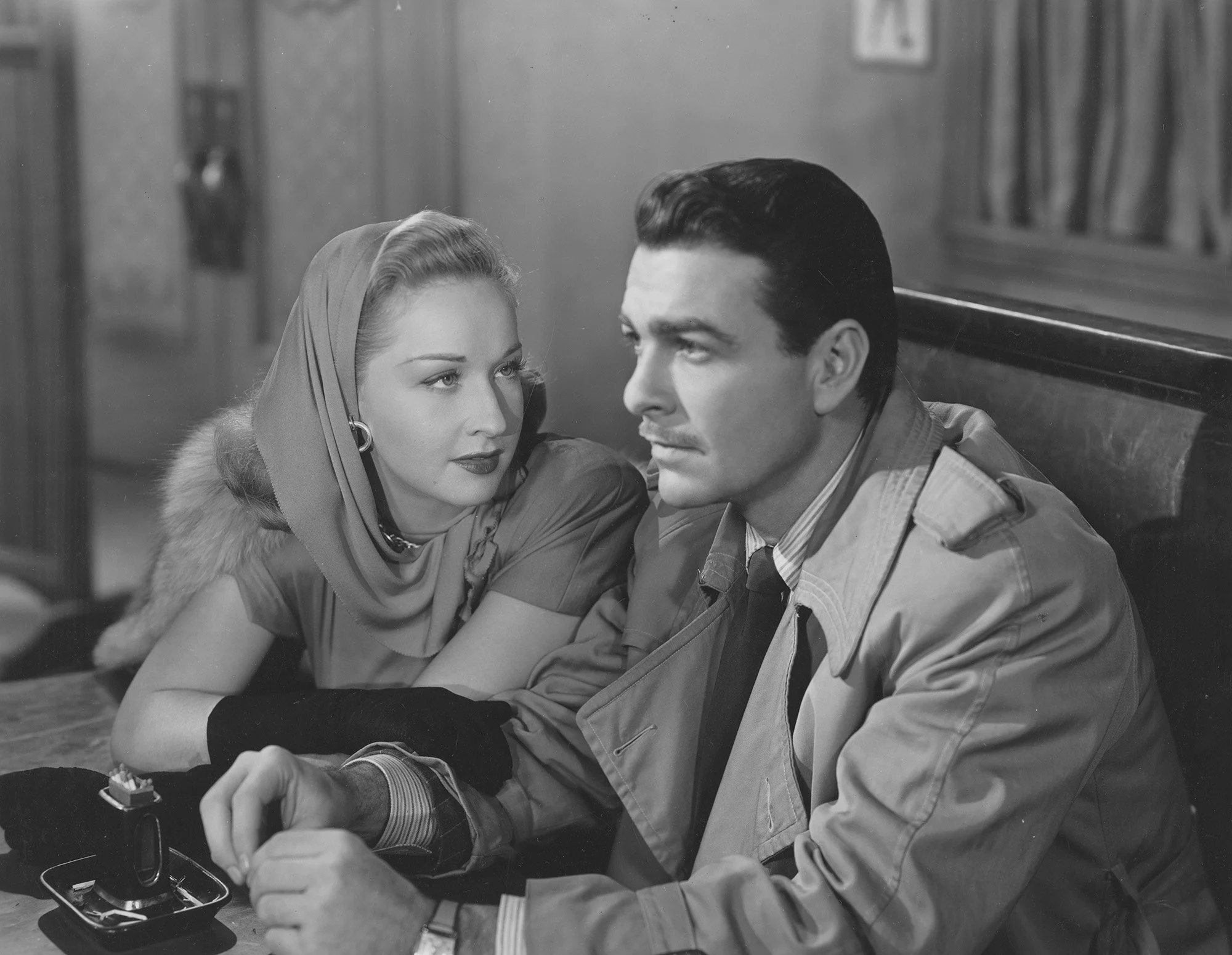Still from The Guilty
The Guilty (1:00 pm)
1947 / 71 min / b/w
Dir. John Reinhardt / Scr. Robert Presnell Sr.
Cast: Bonita Granville, Regis Toomey, Don Castle
Adapted from the short story “He Looked Like Murder,” Detective Fiction Weekly, February 8, 1941
35mm print courtesy of the Film Noir Foundation Collection at the UCLA Film & Television Archive
Fall Guy (2:25 pm)
1947 / 64 min / b/w
Dir. Reginald Le Borg / Scr. Jerry Warner
Cast: Clifford Penn, Robert Armstrong, Elisha Cook, Jr.
Adapted from the short story “C-Jag,” Black Mask, October 1940
Digital copy courtesy of Swank
This screening was part of The Second Annual Dr. Saul and Dorothy Kit Film Noir Festival
Into the Night: Cornell Woolrich and Film Noir
In 1946, Poverty Row studio Monogram Pictures picked up rights for a couple of Woolrich stories – “C-Jag” and “He Looked Like Murder” – which they put into production as Fall Guy and The Guilty, respectively. Both films were completed in November that year and released to theaters the subsequent March. Both translate Woolrich’s Depression-era losers into shell-shocked ex-GIs. Both, furthermore, represent the spectrum of creative possibilities available for ultra-low-budget noir.
Of these, Fall Guy is somewhat the flatter film. Woolrich’s original “C-Jag” concerns a man who comes out of a drug haze with an uncertain recollection of a body in a closet, a first try of a plot premise which he’d reuse the following year for “And So to Death.” But where Woolrich’s story had explored the maddening ambiguities between reality and (drug-addled) memory, the film adaptation largely withholds these psychological motifs in favor a formulaic action plot about a gangland double-cross.
The Guilty, by contrast, demonstrates how the budgetary limitations of the B-level crime film could be catalysts for aesthetic distinction. Stylistically, the film was recognized at the time for its evocative use of sparse settings: “a gloomy, rainswept street, a neighborhood saloon, a couple of shoddy tenement rooms,” as the New York Times reviewer recalled. Narratively, the film anticipates Alfred Hitchcock’s Stage Fright (1950) in its unusual use of a lying flashback (a significant departure from Woolrich’s original, perhaps to give a twist for mystery fans already familiar with the source story).
As another critic pointed out in defense of The Guilty: “There is a school of thought which maintains the B picture performs no useful function. In The Guilty, with its small budget and some untried players, an experiment has worked out well.”


